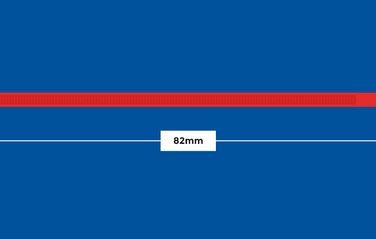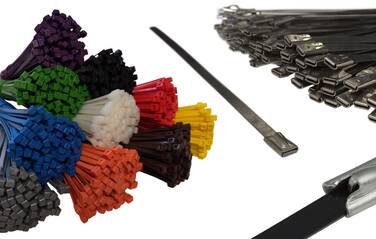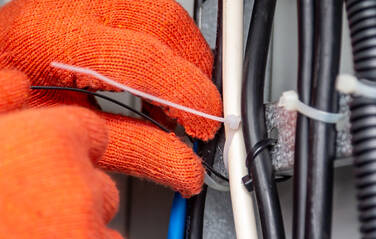With an extensive array of cable ties readily available to buy, picking the correct one for a particular project can seem daunting.
The range of types and sizes can be confusing but a good rule of thumb is to use the smallest tie for the job, which will be easier to handle and more cost effective. Where one cable tie is not long enough for the job in hand, two or more can be joined together to form a chain which can be used as one, larger cable. Types of cable tie include:
Coloured Cable Ties: Indispensable for organising cable groups or to single items out quickly and easily, coloured cable ties are often self-locking and single-use.
Releasable Cable Ties: Releasable cable ties are reusable. While they are often a more expensive option, the benefit is that they can be used multiple times. A nylon tab or button catch is fitted to the head which can be released to stop the teeth biting into the head, allowing the cable to be reopened. Reopening cable ties allows wires to be added to, or removed from, an existing bundle. Although releasable cable ties cannot be used an infinite number of times, they are the ideal solution to any temporary fastening requirements.
Push Mount Cable Ties: This type of cable tie is constructed with a mounting device which removes the need for additional fixings. Push mountain cable ties can be self-adhesive or fixed with a screw and they snap into pre-drilled holes, offering a more secure fastening with a faster mounting process.
Marker Ties: These are essentially a standard cable tie with the addition of a flat plate tag that can be written on. These usually nylon ties can be used in any situation where identification is necessary e.g. identifying cables or particular bunches of keys, or labelling individual items.
Printed Cable Ties: These can be pre-printed with text and are often available with sequential numbering. Also known as security ties, printed cable ties play a valuable role in traceability within the food processing industry, the disposal of clinical waste in healthcare sectors and the tamper-proof gathering and collation of evidence in the police and fire services. More expensive and often requiring larger order numbers, printed cable ties are an ideal solution for any situation needing secure and distinct identification.
The majority of cable ties are manufactured from nylon and/or stainless steel.
Nylon: This is by far the most common material used in the manufacture of cable ties, with Nylon 6/6 being the most frequently used grade. In addition to effective abrasion and thermal resistance, nylon 6/6 is also resistant to fuels and most chemicals. It has a broad working temperature range and satisfies UL94 flammability ratings. Additionally, nylon cable ties can be heat stabilised for exposure to temperatures up to 130°C and UV stabilised for outdoor use.
Stainless Steel Cable Ties: Stainless steel cable ties are strong, durable and rust-proof and offer a high resistance to weathering and ageing. They are ideal for items that need protection from adverse conditions such as chemicals or salt water, and in situations where corrosion or heat damage pose a risk. 316 stainless steel cable ties also have a higher melting point, rendering them fire resistant. Coupled with a high tensile strength and working temperature range of -80°C - 538°C, cable ties manufactured from stainless steel are fully compliant with the 18th Edition of the IET Wiring Regulations (BS7671) which came into force on January 1st 2019.








